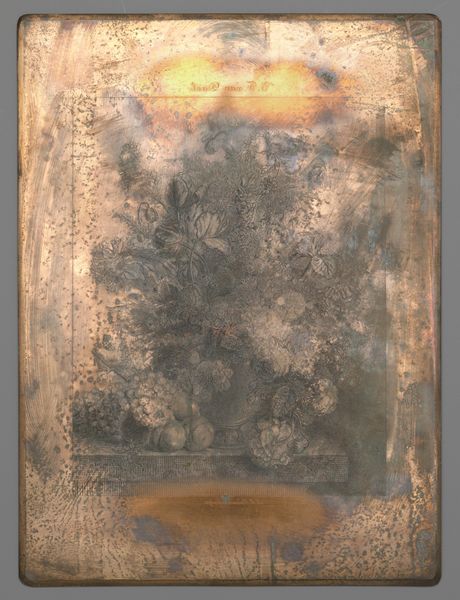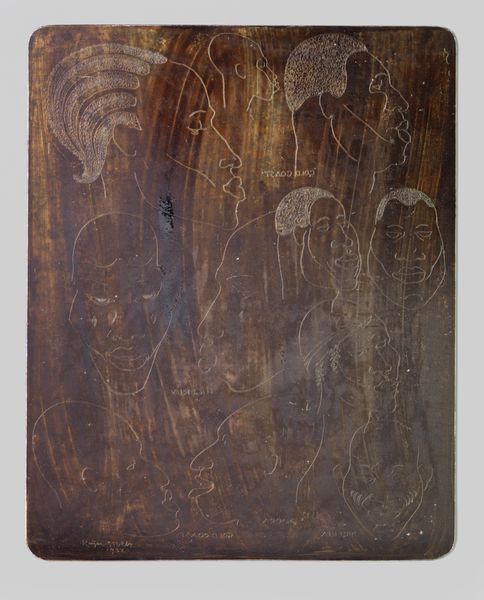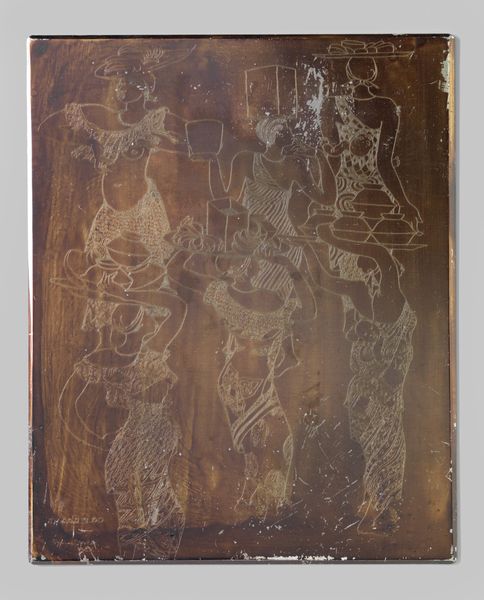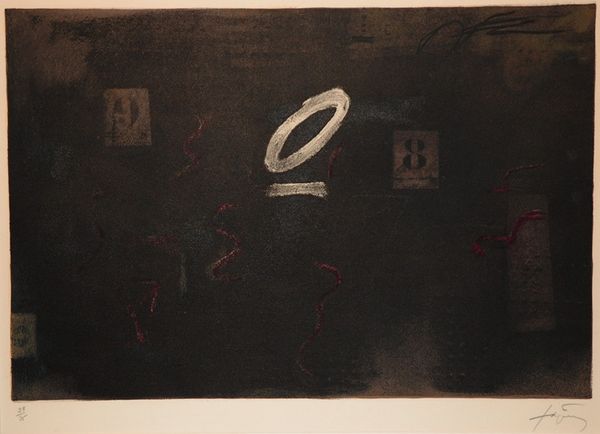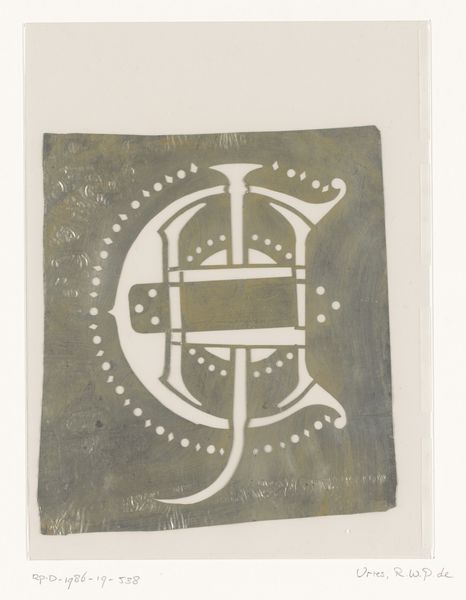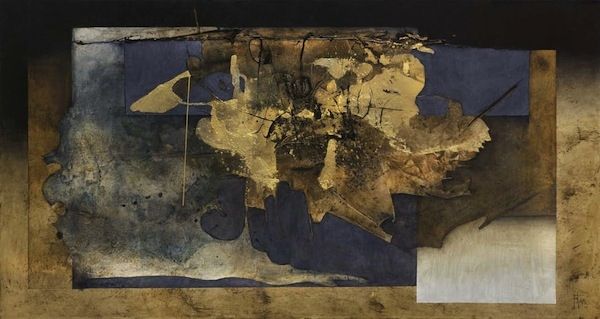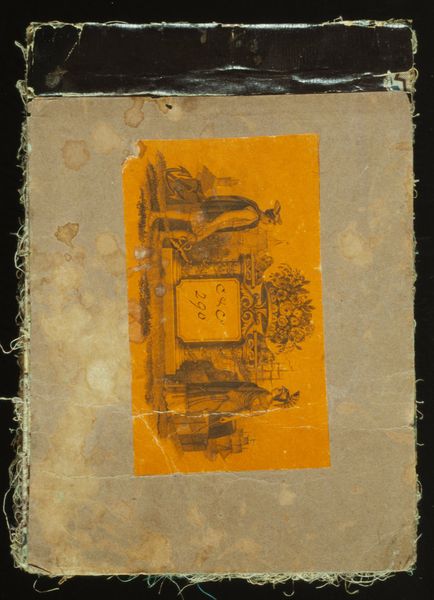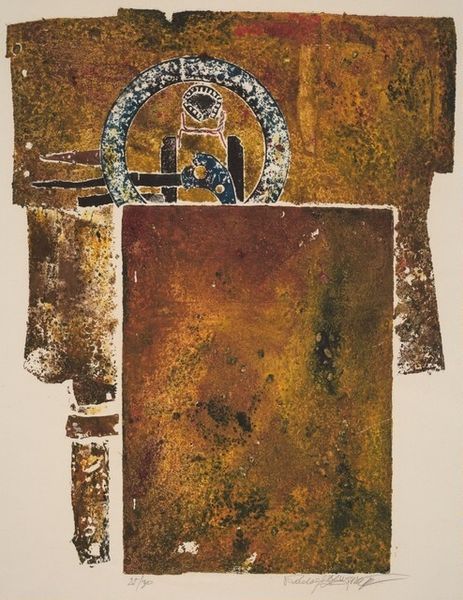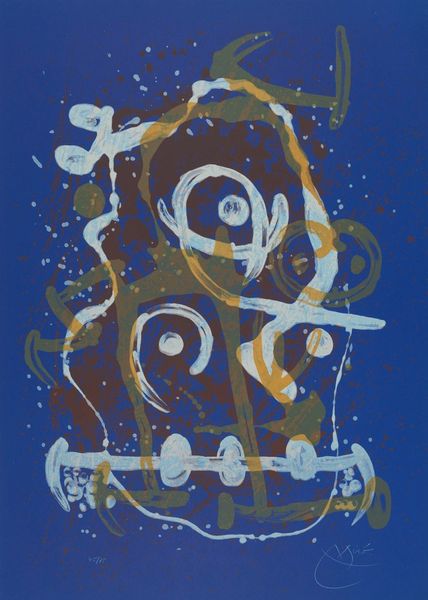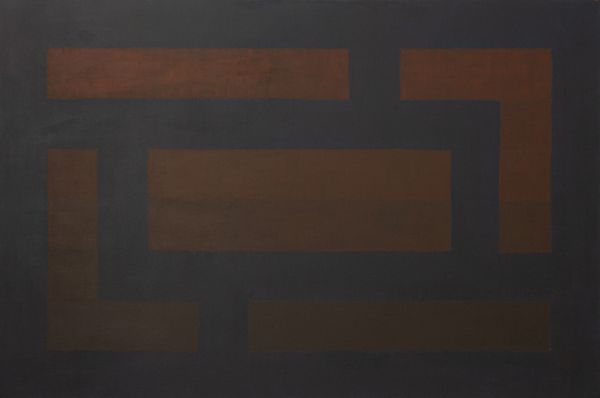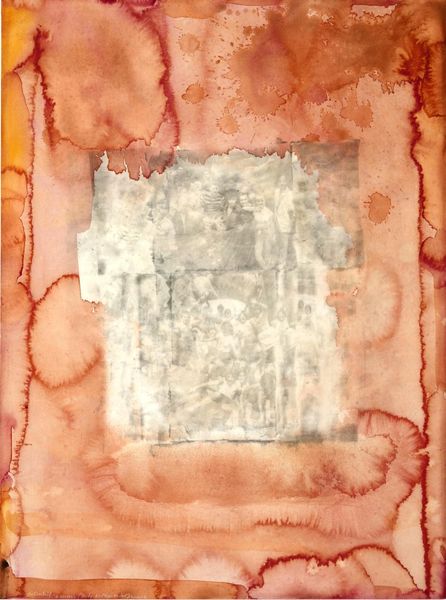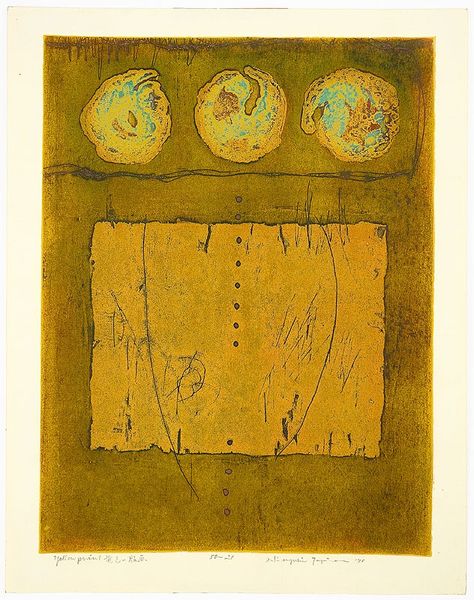
collage, acrylic-paint, wood
#
cubism
#
collage
#
acrylic-paint
#
geometric
#
abstraction
#
wood
Dimensions: 113.5 cm (height) x 81.5 cm (width) (Netto)
Editor: Right, next up is Vilhelm Lundstrom’s *Composition 2* from 1918. It looks like a collage, but it's actually acrylic paint and wood. It gives off a very cluttered and almost industrial vibe to me. What sense do you make of it? Curator: It’s fascinating how Lundstrom utilizes collage within the painting. Think about the sociopolitical climate of 1918, right after World War I, where materials were scarce. To me this becomes more than just abstract form. How does the incorporation of everyday material reflect or perhaps comment on the social reality of its time? Editor: I see your point. So, the materials themselves become part of the statement. The work uses salvaged, humble materials like scraps of wood… Could the artist be saying something about resilience, making art from the remnants of destruction? Curator: Exactly! Consider too the rough application of the paint, the raw texture. What would polished, pristine surfaces have communicated during that period, versus this? Also, notice how the oval in the background frames the wood. What do you think about that choice of composition? Editor: Maybe it provides some kind of formal containment to an otherwise chaotic assemblage of the wood scraps. So the oval feels symbolic, framing not beauty but perhaps, instead, a modern ugliness. Curator: It certainly gives us a lot to consider. It reflects how Cubism moved past merely representing fragmented perspectives to becoming a visual manifestation of post-war material reality. And to your point, a symbolic departure from classical notions of beauty, for sure. Editor: That's definitely reshaped how I see it. I was initially thrown off by its roughness, but now I understand how much that contributes to its message. Thanks. Curator: My pleasure. It’s about recognizing art's ongoing dialogue with history. It invites you to view what is considered high art and what is low material, but also challenges our perceptions of value.
Comments
statensmuseumforkunst almost 2 years ago
⋮
Both in terms of imagery and medium, Lundstøm’s so-called ”crate pictures” are among the most radical pieces created on the Danish art scene during the first half of the 20th century. The materials used The artist used crudely sawn and frayed pieces of wood from discarded crates, hence the designation ”crate pictures”. In this case, the pieces of wood have been nailed onto an oval base and partially painted with rapid, smeared brushstrokes alongside the letters and signs appearing on the original crates. Inspired by Picasso's experiments with collage In part, Lundstrøm’s picture was made possible through Pablo Picasso’s (1881-1973) experiments with collage, a technique that held a central position in his production from 1912 onwards. Collage was excellent for accentuating the physical nature of the work; it quite literally consisted of found and pre-processed materials. The same applies to the pieces of wood in Composition 2. With their rough and unpolished feel they are very literal pieces of reality, emphasising that the picture does not represent anything outside of itself. The Cubist principles Lundstrøm later explained that he and like-minded artists also employed the Cubist principles to make their images entirely anonymous or impersonal: ”We endeavoured to work towards simplicity and painterly order.”
Join the conversation
Join millions of artists and users on Artera today and experience the ultimate creative platform.

